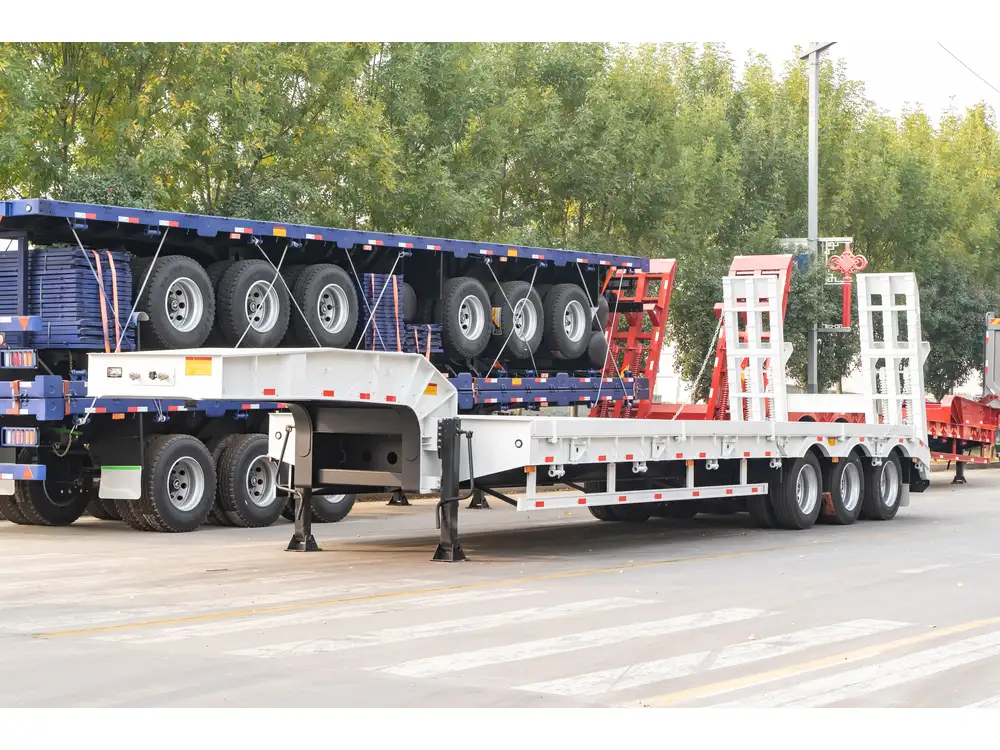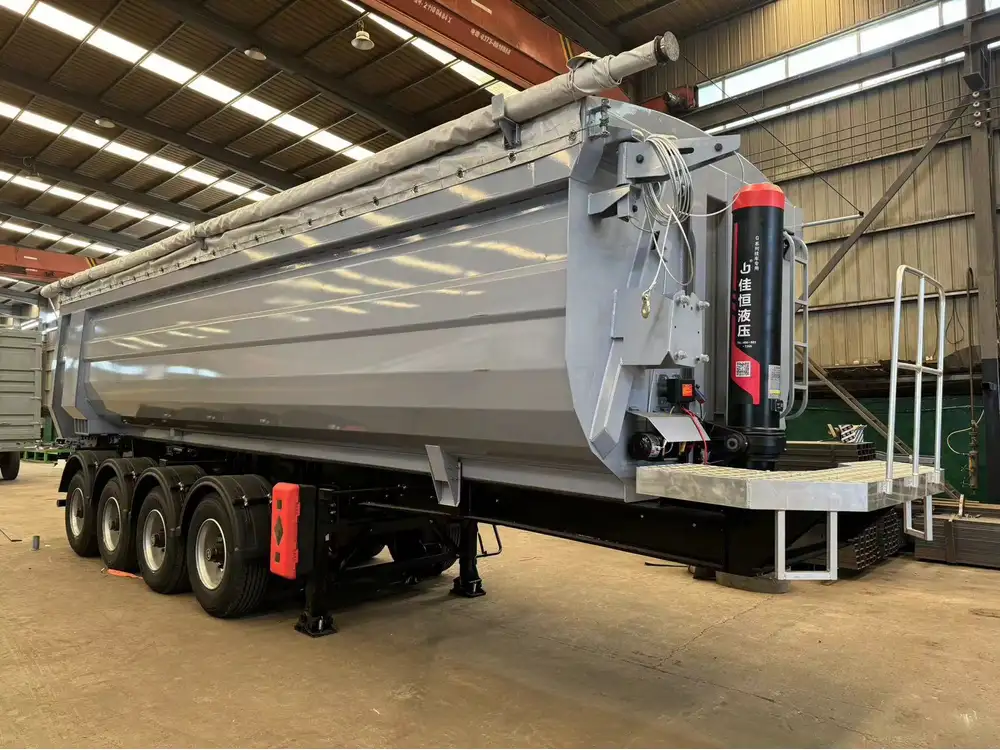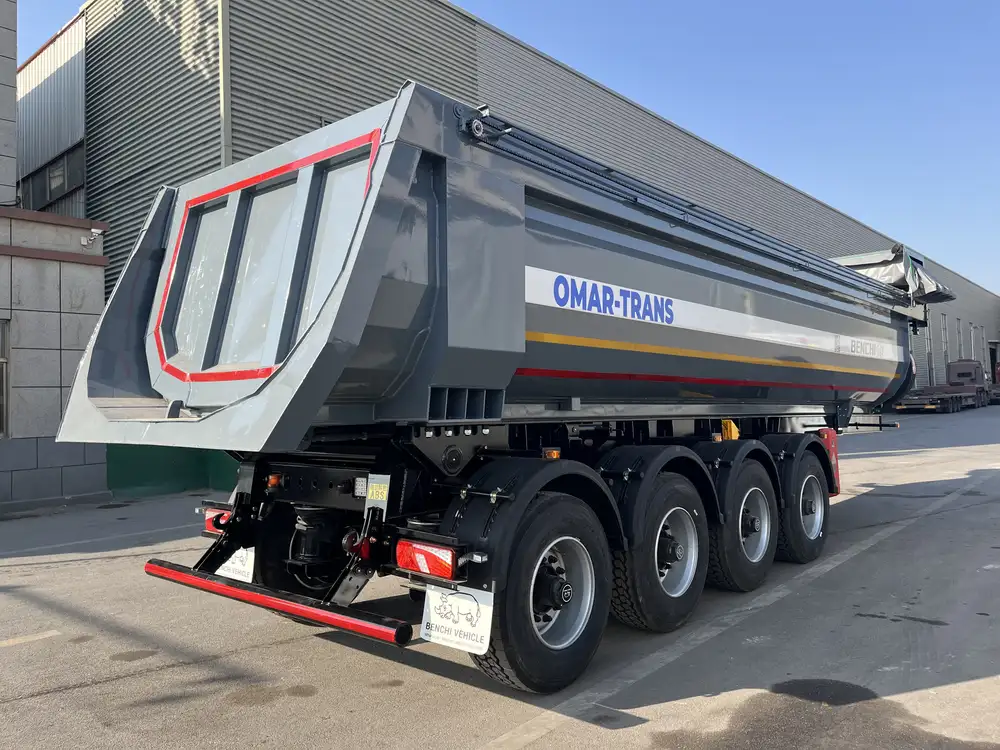In the realm of heavy-duty manufacturing and transportation, scissor lifts have become essential tools. When integrated with dump trailers, they provide enhanced functionality, efficiency, and safety. This article delves deep into the concept of scissor lifts on dump trailers, exploring their mechanics, benefits, applications, and operational considerations.
What is a Scissor Lift on a Dump Trailer?
A scissor lift on a dump trailer is a mechanical device that elevates and lowers cargo or other materials using a scissor-like mechanism. It consists of a series of folding arms that, when actuated, unfold and extend vertically. Primarily, these lifts function to simplify the loading and unloading process, particularly for heavy or awkwardly-shaped items.
Key Features
| Feature | Description |
|---|---|
| Load Capacity | Varies widely; tailored to specific trailer types. Typical ranges: 5,000 to 20,000 pounds. |
| Height | Depending on the model, lifts can reach elevations from 6 to 15 feet or more. |
| Operation | Can be hand-operated, electrically powered, or hydraulically controlled. |
| Construction | Typically built with heavy-duty steel for durability and stability under load. |

Mechanism of Operation
Understanding how a scissor lift operates is crucial for users who want to leverage its capabilities effectively. The core mechanism consists of:
Hydraulic Actuation: Most modern scissor lifts utilize hydraulic systems to power their movement. Pressurized fluid moves pistons that control the lift’s height.
Scissor Mechanism: The “scissors” refer to the crisscross pattern of arms that articulate as the lift operates. As hydraulic pressure increases, these arms expand, raising the platform.
Control Systems: Users engage the lift through controls that may range from simple levers to sophisticated remote systems, depending on the trailer’s design.
Benefits of Scissor Lifts on Dump Trailers
Integrating a scissor lift with a dump trailer brings numerous advantages:
1. Enhanced Efficiency
Scissor lifts expedite the process of loading and unloading. This efficiency translates to time and labor savings, as operators can move materials quickly without needing additional equipment.

2. Improved Safety
By allowing operators to manage heavy loads with precision, scissor lifts significantly reduce the risk of accidents associated with manual lifting. Ergonomically designed lifts minimize strain on workers, adhering to safety standards.
3. Versatile Applications
These lifts are particularly valuable in industries where heavy payloads are common:
- Construction: Transporting materials such as bricks, steel, or machinery.
- Landscaping: Moving large plants or earth-moving equipment.
- Waste Management: Efficiently loading bulky waste into trailers.
4. Space-Saving Design
The compact nature of scissor lifts allows them to fit seamlessly within dump trailer designs. When not in use, they fold away, optimizing cargo space.

Specifications to Consider
When selecting a scissor lift for a dump trailer, consider the following specifications:
| Specification | Importance |
|---|---|
| Weight | Ensure the trailer can handle the lift’s weight without compromising stability. |
| Height Range | Evaluate the maximum height needed for operations. |
| Load Capacity | Select a lift rated for the heaviest load you anticipate transporting. |
| Power Source | Decide between electric, hydraulic, or manual options based on operational needs. |
Installation Process
Installing a scissor lift onto a dump trailer requires technical know-how and precision engineering. The following steps outline a general approach for installation:
1. Planning and Measurement
Conduct thorough assessments of the trailer size, intended lift specifications, and material payloads. This planning phase is crucial for a successful installation.

2. Selecting the Right Lift
Choose a scissor lift that meets your operational requirements. Verify compatibility with your trailer, considering both weight and height.
3. Bracket and Frame Fabrication
Custom fabricate brackets to secure the scissor lift to the trailer’s frame, ensuring all components are aligned and bolted correctly.
4. Hydraulic Line Installation
Connect hydraulic lines for power, linking the lift to hydraulic reservoirs or pumping systems. Check for leaks and operational efficiency before proceeding.

5. Electrical Integration
For electric models, wire the control system into the trailer’s electrical circuitry. Ensure all systems are operational and provide clear instructions to users.
6. Testing and Calibration
After installation, perform rigorous tests to ensure the lift operates correctly under load conditions. Adjust hydraulic pressure and calibrate sensors for optimal functionality.
Maintenance and Care
To prolong the life of your scissor lift and ensure optimal safety and functioning, regular maintenance is pivotal. This includes:
Regular Inspections: Conduct visual and functional inspections before and after each use. Check for leaks, cracks, or unusual wear on the scissor arms and hydraulic components.
Lubrication: Apply lubricant to moving parts as recommended by the manufacturer. This minimizes friction and wear.
Hydraulic Fluid Checks: Monitor hydraulic fluid levels and replace any depleted or contaminated fluids promptly.
Electrical System Review: Periodically check electrical connections and wiring for signs of corrosion or wear.
Professional Servicing: Schedule regular professional inspections and servicing to adhere to safety regulations and maintain optimal performance.

Troubleshooting Common Issues
Even the best machinery can encounter problems. Here are common issues with scissor lifts and possible solutions:
| Issue | Potential Causes | Solutions |
|---|---|---|
| Lift Won’t Move | Low hydraulic fluid; electrical fault. | Check fluid levels; inspect wiring. |
| Uneven Lift Operation | Blocked mechanism; hydraulic imbalance. | Clear obstructions; level hydraulic fluid. |
| Strange Noises | Worn components; lack of lubrication. | Inspect and replace worn parts; lubricate. |
| Overheating | Overuse; under-rated lift capacity. | Allow cooling; reassess load requirements. |
Real-World Applications
Exploring how industries utilize scissor lifts on dump trailers provides insight into their value:
Construction Sites: Builders employ scissor lifts for transporting bricks or heavy beams, expediting material handling while enhancing safety protocols.
Landscaping Companies: These companies often face challenges relocating oversized plants or supplies. Scissor lifts enable them to load trailers efficiently without damaging fragile materials.
Logistics and Supply Chain: In warehouses, scissor lifts attached to dump trailers facilitate the quick transport of goods, ensuring timely deliveries—crucial for maintaining service contracts.
Environmental Services: Waste management professionals benefit significantly from the ability to maneuver large waste loads quickly, helping to maintain clean and organized work sites.
Conclusion
Incorporating a scissor lift onto a dump trailer stands as a solution to the challenges faced in various industries that deal with heavy lifting. From streamlining operations to enhancing safety protocols, the insights presented in this article highlight the value of this innovative technology. Users are encouraged to tread carefully through the selection, installation, and maintenance processes, ensuring that every component operates harmoniously to achieve peak performance.

Call to Action
For those considering the integration of scissor lifts with their dump trailers, connect with professionals who can guide you through your choices, from selecting the right model to ensuring optimal installation and maintenance. We are here to assist you in maximizing efficiency and safety in your operations.



